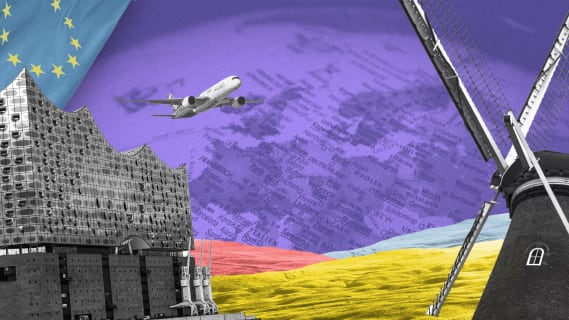What’s our approach to building a product development team for you?
Selecting a product development team is like building your ideal sports team. It should consist of leaders but also followers. It should be experienced, but include fresh vitality. The team should play according to a clear strategy and understand the vision they’re obligated to accomplish. But what exactly is our approach to building a development team to work on your product? Read on to learn how you can benefit from our process.

Table of contents
When do we start selecting a team?
The process starts usually soon after the initial call, if we have enough information. Our business solution architect together with a technological solution architect are both present at the meeting. Immediately after that they can start preparing estimations and the team composition just to have a general idea of what the final proposition will look like. If you want to learn more, read what to expect when contacting Boldare.
Regardless of the final team composition, we work according to the following principles:
1. Finding the right team according to the phase of the product
Boldare’s entire environment is built to create products that your users really want and need. We organized our internal structure around the full cycle product development idea. This means that there are distinct teams specializing on products in an early phase of development (like prototypes or MVPs) and teams that work on mature products that are in the product-market fit or scaling phase.
We know that you need a completely different set of skills and experience when working on an MVP, which is built in order to release a product to the market quickly, compared to scaling an existing app with a big group of paying users.
That’s why we start every collaboration with workshops that help us gather the necessary data to understand the product and your business needs. Then, when we know the needs and pain points very well, we are able to select experts that will bring the most value to your product.
2. Mixed seniority to boost creativity
It’s very probable that you wish to have only senior developers working on your product, and that’s understandable. We all associate experience with quality of work. But just like in sports, a good team should consist of people with varying experience, because they bring different values to the table that often complement each other. Seniors offer cutting edge skills, while juniors bring curiosity and out-of-the-box thinking. We aim to hold the following ratio of team experience levels for a product development roles:
- 35% juniors
- 40% mediors
- 25% seniors
This way we are sure that the team will present a healthy balance with various advantages.
3. Interdisciplinarity is key
For many, creating software means writing executable code and nothing more. But having faultless code is rarely a guarantee of a business success without outstanding UX, good time to market ratio and a roadmap that supports the company’s goals. That’s why our Scrum teams are multidisciplinary. We create them with various roles, but developers, product designers and scrum masters are pillars of every one.
In many cases, we act on the necessity of expanding the team when there’s such a need. We usually offer additional roles of QA engineers, product strategist or even help from our CTO as a service role. Everything depends on the actual needs and challenges the product team faces. Sometimes, product owners need a helping hand with drawing up a strategy for the product after the situation on the market changes, and sometimes the team needs to face an important pivot.
Regardless of the situation - interdisciplinarity supports a team’s ability to react to the changing environment. And we want your team to be ready for such events, just like a good team is able to change tactics depending on the game’s progress.
4. Experience in similar projects
This one is quite simple. It means that the team we assemble to work on your product will consist of people who already have experience in a similar product in terms of its maturity level and type (like mobile, web or wearable app). Experience in working in particular product development phases is one thing, but experience in working for a particular industry or product type is something different.
This kind of experience can pay off at every stage: it’s easier to choose tools, libraries, third party apps, and easier to deal with the potential challenges that are typical for the type of product.
5. Client Relation Specialist Is always a part of the team
Saying that relationships are important is cliche - we know that. But, at the same time it’s true and we know that our clients feel the same. That’s why every Boldare team has a role dedicated to the client relationship, that is focused only on caring about the quality of collaboration. While our clients have contact with the entire product team and can ask them about anything (thanks to radical transparency), the client relationship role is focused on contact with the stakeholders and risk mitigation. The duties of that person are very clear - it’s making sure that the team can focus entirely on creating the product and delivering value to you.
How effective is our approach?
Building an ideal sports team takes effort, but once you do it, you get a group that complements each other, works towards a common goal and communicates. We trust in the process we have created and it pays off - our teams are praised for the impact they have on the client’s business. There’s plenty of great quotes that back up this statement on our Clutch profile. One of my favorites is this one:
They don’t just build a product; their team adds value throughout the whole process.” CEO, Interstate Data
Randy Carpenter
Share this article:









